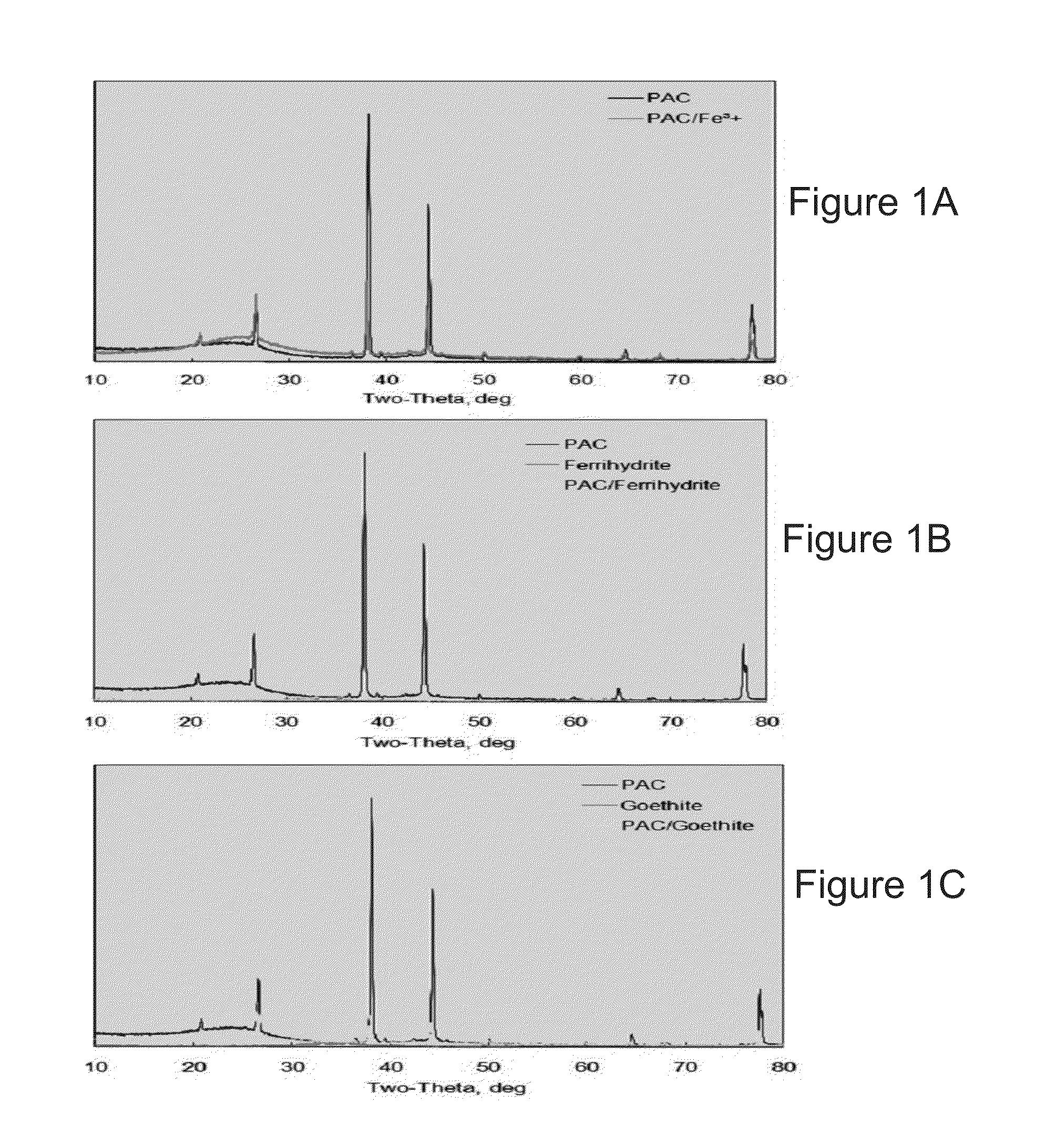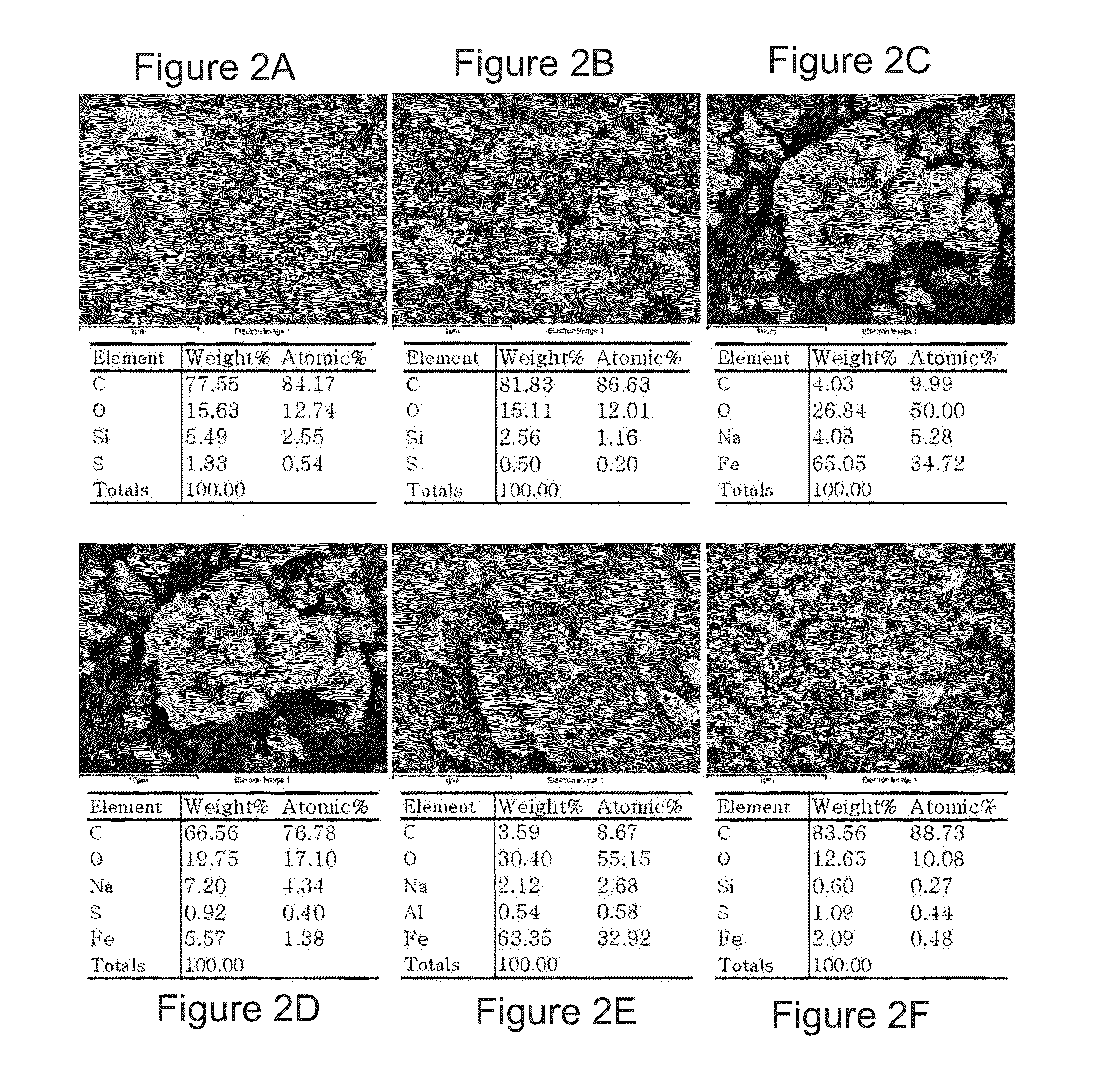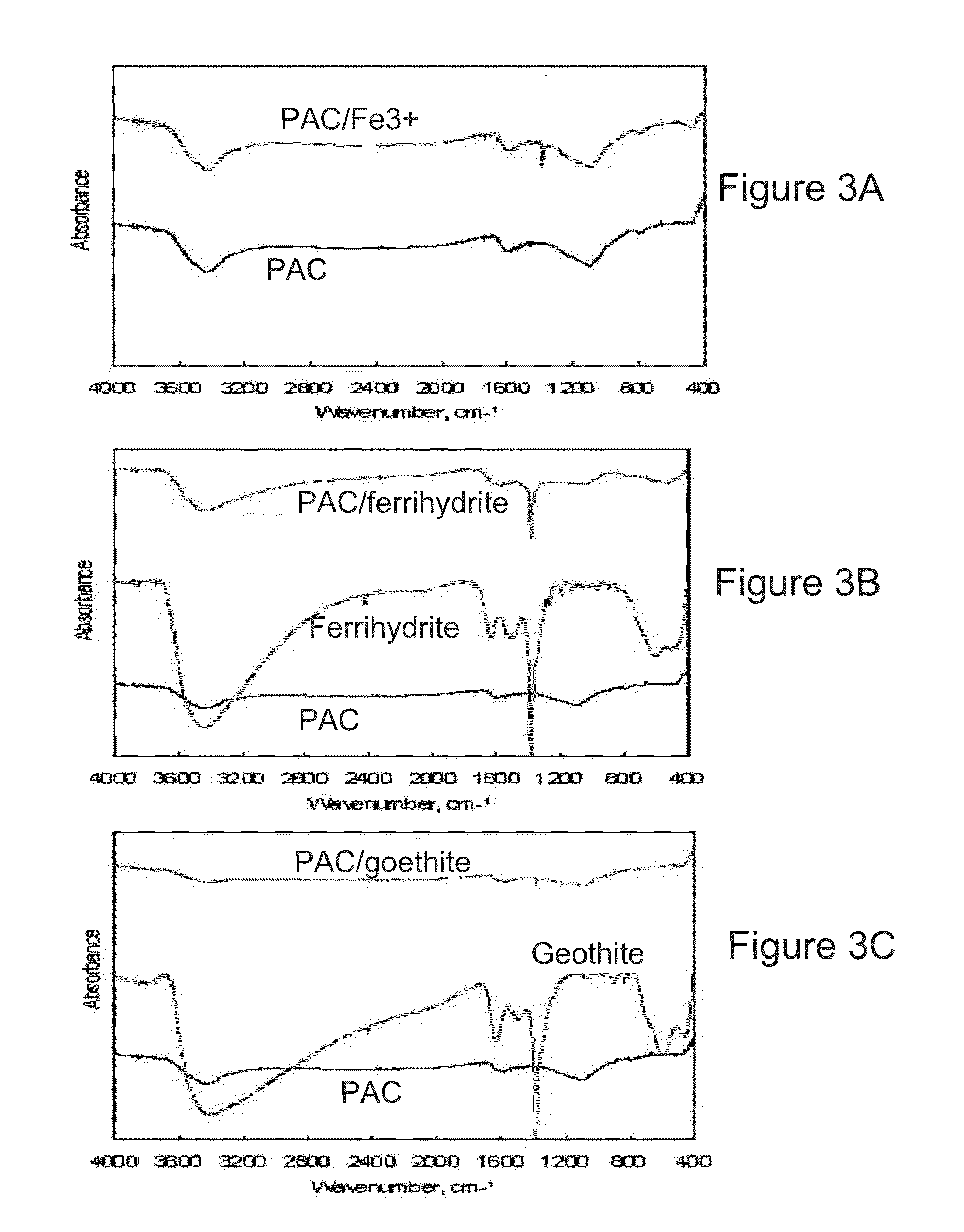Method for producing an organic-inorganic hybrid sorbent by impregnating an oxide into nanopores of activated carbone and use thereof in water treatment
a technology of activated carbon nanopores and nanopores, which is applied in the direction of physical/chemical process catalysts, other chemical processes, separation processes, etc., can solve the seriousness and risk of environmental pollution due, water pollution problems, and insufficient research into integrated control management and processing systems in korea, etc., to achieve easy synthesizing, improve the effect of adsorption performance and reduce the cost of operation
- Summary
- Abstract
- Description
- Claims
- Application Information
AI Technical Summary
Benefits of technology
Problems solved by technology
Method used
Image
Examples
example 1
Manufacture of Activated Carbon Impregnated with Ferrihydrite
[0046]In order to manufacture PAC impregnated with ferrihydrite, 2 g of PAC was placed in a polyethylene flask, added with 30 mL of 1M Fe(NO3).9H2O solution, and allowed to stand for 1 hr. After one day, the activated carbon was dried at 40° C., titrated to pH 7-8 using 2 M NaOH, and centrifuged. Thereafter, the supernatant was decanted, and the precipitate was sufficiently washed until the electrolyte was completely removed therefrom, and then dried at 40° C., thus manufacturing PAC impregnated with ferrihydrite.
example 2
Manufacture of Activated Carbon Impregnated with Goethite
[0047]The manufacture of PAC impregnated with goethite was carried out in such a manner that 2 g of PAC was placed in a polyethylene flask, added with 30 mL of 1M Fe(NO3).9H2O solution, and allowed to stand for 1 hr. After one day, the activated carbon was separated from the solution, dried at 40° C., and titrated to pH 11-12 using 2 M NaOH. The titrated solution was immediately transferred into a 1 L polyethylene flask, diluted by the addition of deionized water up to the mark of the flask, and then allowed to stand at 70° C. for 60 hr. In this procedure, while reddish brown colored ferrihydrite particles were precipitated, they turned to yellowish brown colored goethite. Subsequently, the precipitate was washed several times, and dried at room temperature, thus manufacturing PAC impregnated with goethite.
example 3
Manufacture of Activated Carbon Impregnated with Hematite
[0048]The manufacture of PAC impregnated with hematite was carried out in such a manner that 2 g of PAC was placed in a container, added with 30 mL of 1M Fe(NO3).9H2O solution, and allowed to stand for 1 hr, as in the above iron oxide. After one day, the activated carbon was separated from the solution, dried at 40° C., and titrated to pH 6.5 using 2 M NaOH and 0.002 M oxalic acid. The titrated solution was allowed to stand at 90° C. for 36 hr. In this procedure, a 4.4 M imidazole buffer solution was added to prevent the pH from dropping. After completion of the reaction, the precipitate was dried at room temperature, thus manufacturing PAC impregnated with hematite.
PUM
| Property | Measurement | Unit |
|---|---|---|
| pH | aaaaa | aaaaa |
| temperature | aaaaa | aaaaa |
| molecular weight | aaaaa | aaaaa |
Abstract
Description
Claims
Application Information
 Login to View More
Login to View More - R&D
- Intellectual Property
- Life Sciences
- Materials
- Tech Scout
- Unparalleled Data Quality
- Higher Quality Content
- 60% Fewer Hallucinations
Browse by: Latest US Patents, China's latest patents, Technical Efficacy Thesaurus, Application Domain, Technology Topic, Popular Technical Reports.
© 2025 PatSnap. All rights reserved.Legal|Privacy policy|Modern Slavery Act Transparency Statement|Sitemap|About US| Contact US: help@patsnap.com



